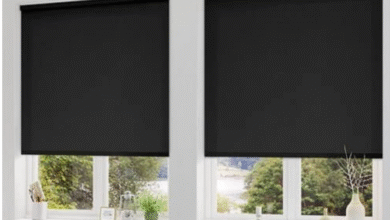Tips to Negotiate the Best Price on a Used Car

Want to buy a used car but worried about paying too much?
You’re not alone.
Many people end up spending more than they should because they lack proper negotiation skills.
This can leave you stressed and regretting your purchase. However, there is good news.
With the right preparation and smart negotiation tips, you can save hundreds or even thousands of dollars!
Whether you’re looking at used cars Abu Dhabi or anywhere else, this guide will help you get the best possible price.
Let’s dive into the strategies that will put you in control.
Do Your Homework Before You Start Shopping
Research is your secret weapon when buying a used car.
First, you need to know what the car should actually cost.
Use websites like CarGurus, Kelley Blue Book, and Edmunds to check prices. Look at cars that match what you want in terms of make, model, year, and mileage.
Write down three important numbers.
The lowest price, the middle price, and the highest price. This gives you a clear picture of what’s fair.
Your opening offer should be at or below that lowest number. This strategy leaves room for negotiation while keeping you in safe territory.
Get Your Money Ready First
Never walk into a dealership without knowing how you’ll pay.
Getting pre-approved for a loan from a bank or credit union before you shop is crucial.
This tells you exactly how much you can afford and makes you look like a serious buyer.
Compare interest rates from different lenders.
Check with local banks, credit unions, and trusted online lenders. Make sure your pre-approval letter lasts at least 30 days.
When you’re at the dealership, show them your financing first. Then, you can use their financing offer to negotiate an even better rate or lower price.
Check the Car’s Past
A vehicle history report is like a report card for the car.
Services like Carfax or AutoCheck show you everything important about the car’s past.
You’ll see if it was in accidents, if it has any recalls (when a manufacturer fixes a safety problem for free), and how well it was maintained.
Look carefully for red flags like salvage titles, flood damage, or rolled-back odometers.
If you find problems, calculate how much repairs would cost.
These numbers become powerful tools during negotiation. For example, if the car needs $800 in repairs, you can ask the seller to reduce the price by that amount.
Inspect the Car Carefully
Never skip the inspection step.
Either hire a mechanic or use a mobile inspection service to check the car thoroughly.
During your test drive and inspection, pay attention to these several key areas:
- Check how the engine runs and how smoothly the transmission shifts.
- Look at the brakes, suspension, and tires.
- Examine the paint, body panels, and interior for wear and tear.
- Test all electrical features like lights, windows, and the radio.
- Look underneath for leaks or rust.
Take photos of every problem you find. Use websites like RepairPal to estimate repair costs for each issue.
Keep all this information organized in a notebook or folder. You’ll need it when making your offer.
Understand Dealer Pricing
Dealers buy cars for less than they sell them for.
Learning about invoice prices helps you understand their profit margin. Websites like Edmunds can show you what dealers typically pay.
This knowledge helps you make a fair offer that still gives the dealer some profit.
Aim for a price just above what the dealer paid, then subtract any repair costs you discovered during inspection.
This becomes your target maximum price.
Stay Cool and Confident During Negotiation
Your attitude matters just as much as your words.
Keep your emotions in check even if you love the car. Stay calm and business-like throughout the process. Make sure to take notes during the conversation and pause before responding to offers.
Start with an offer 10-15% below your maximum price.
Use round numbers like $14,500 instead of $14,487. This makes you seem confident and prepared.
Always explain why you’re offering that price using your research and inspection findings.
Focus on the Total Price
Dealers often talk about monthly payments to distract you from the actual car price.
Don’t fall for this trick.
Instead, negotiate the “out-the-door” price. This is the final amount you’ll pay including all taxes, fees, and extras.
Ask for a detailed breakdown of every charge and question any fees that seem unclear or unnecessary.
Some dealers add charges for VIN etching (carving the car’s ID number on windows) or paint protection (special coating for the paint) that you don’t need.
Remove these extras or negotiate them down.
Use Your Evidence
Present your research clearly and confidently.
Say things like, “Similar cars without accident history cost 8% less in this area,” or “This rust repair will cost $600, so I’m deducting that from my offer.”
Make a list showing each problem and its cost. Add up all the deductions at the end.
This shows the seller you’ve done your homework and aren’t guessing at numbers.
Know When to Leave
Set your maximum price before negotiations start and stick to it.
If the seller won’t meet your terms, be ready to walk away. There are plenty of other cars available.
Sometimes, letting the seller know you’re leaving brings out their best offer.
Remember, this knowledge is power, preparation beats pressure, and the best deal always goes to the buyer who’s ready to walk away.



